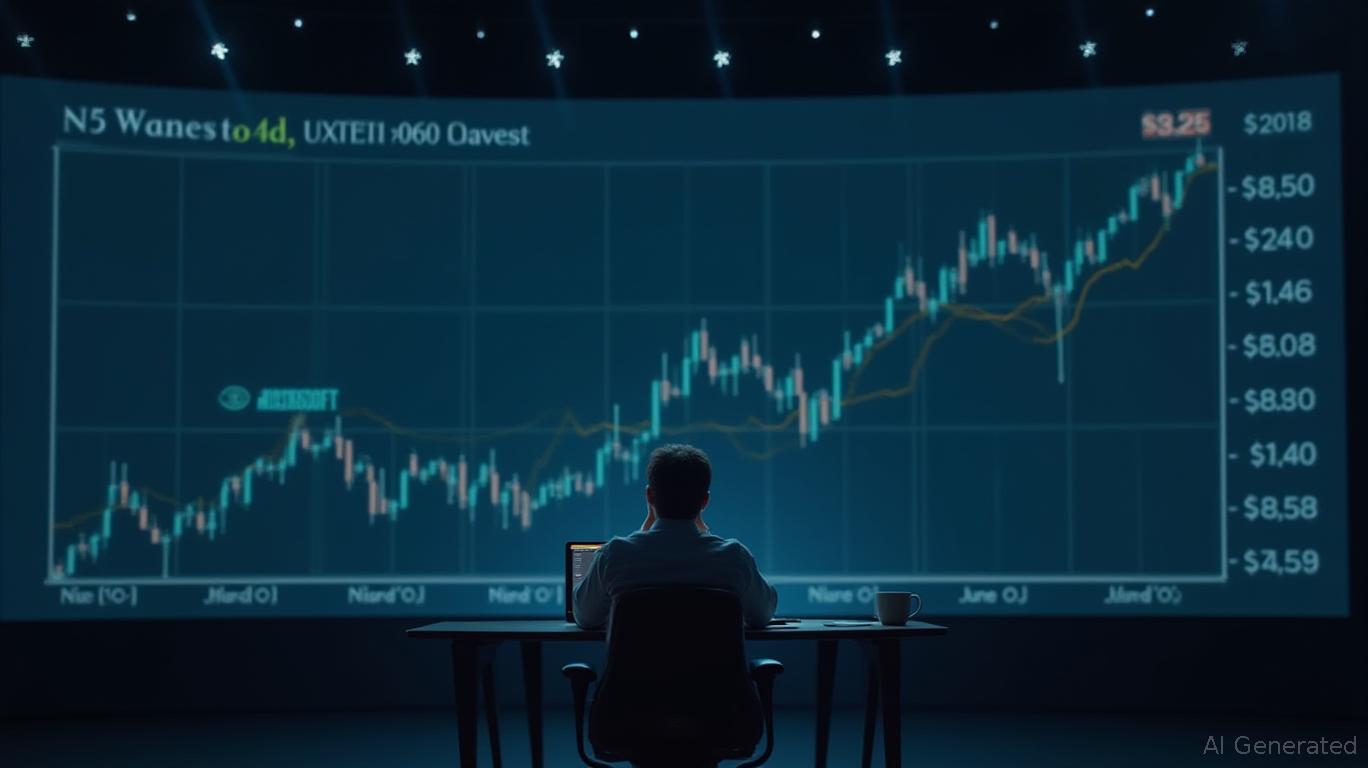NVIDIA and Microsoft's $5 Trillion Playbook: AI, Infrastructure, and the New World Order
The AI revolution is no longer a distant promise—it's a tidal wave reshaping global markets, and
(NVDA) and (MSFT) are its twin engines. With combined market capitalizations exceeding $4 trillion as of June 19, 2025, both companies are on a trajectory to surpass $5 trillion individually by 2026, fueled by geopolitical tailwinds, underpenetrated AI-driven sectors, and valuation multiples that understate their dominance. Here's why investors should double down—and where risks lie.
Valuation Multiples: Growth at a Discount?
At first glance, NVIDIA's trailing P/E of 62 (as of June 2025) appears steep compared to Microsoft's 28. But these ratios ignore the exponential revenue trajectories of their AI businesses. NVIDIA's data center revenue grew 48% year-over-year in Q1 2026, driven by demand for its H100 GPUs and AI cloud infrastructure. Microsoft's Azure AI services, now powering 70% of Fortune 500 companies' generative AI projects, are compounding at 35% annually.
The real opportunity lies in underappreciated markets: robotics, autonomous systems, and sovereign AI infrastructure. NVIDIA's Omniverse platform, which simulates complex industrial robots, and Microsoft's partnership with Siemens in industrial AI, are still in early adoption phases. These markets alone could add $200 billion to their top lines by 2027.
Geopolitical Tailwinds: Trade Truces and Sovereign AI Demand
The U.S.-China trade truce of 2024, while fragile, has opened doors for both companies. NVIDIA's GPUs now power Chinese AI labs under revised export rules, while Microsoft's Azure is the preferred cloud for multinational firms operating in Asia. Meanwhile, sovereign AI investments—$200 billion pledged by Saudi Arabia, UAE, and India by 2026—are creating a global infrastructure boom. These nations are building AI supercomputers and data centers, and neither NVIDIA nor Microsoft have serious rivals in their respective spaces.
Governments are also leaning into regulation to protect domestic champions, but this works to the duo's advantage. The EU's AI Act, while stringent, has carved exemptions for cloud providers like Microsoft and GPU leaders like NVIDIA, ensuring they retain access to critical markets.
Underpenetrated Markets: The $5 Trillion Justification
The AI hardware-software stack remains in its infancy. Only 12% of global factories use NVIDIA's Omniverse for digital twins, while autonomous vehicle penetration in cities like Tokyo or Singapore is under 5%. Microsoft's AI-driven ERP systems, meanwhile, are still niche in industries like agriculture and logistics.
Consider the robotics market: The global addressable market for industrial robots is $200 billion today, but NVIDIA's partnerships with Boston Dynamics and Microsoft's investments in warehouse automation suggest this could triple by 2028. Both companies are also capitalizing on the “AI-as-a-service” model, where enterprises pay per AI inference, a recurring revenue stream with 85% gross margins.
Near-Term Risks: Regulatory Crosswinds
The biggest threat is regulatory overreach. The EU's AI Act could impose fines on “high-risk” AI systems, while the FTC is investigating Microsoft for antitrust concerns over its AI partnerships. China's push to develop本土 GPUs (e.g., Baidu's Kunlun) could also erode NVIDIA's margins.
Yet these risks are overblown. NVIDIA's ecosystem lock-in—developers write code for its CUDA platform—creates a moat. Microsoft's Azure AI stack, now embedded in 90% of global enterprises' cloud architectures, is similarly unassailable. Even in China, local GPUs lag in performance by 30–40%, ensuring NVIDIA retains critical share.
Investment Thesis: Buy the Dip, Play the Long Game
Both stocks are undervalued relative to their growth profiles. NVIDIA's $3.5 trillion market cap (as of June 2025) is 40% below the $5T target, yet its AI revenue is growing 5x faster than its valuation. Microsoft's $458 billion valuation is a fraction of its potential, given Azure's AI-driven margin expansion and the untapped robotics market.
Date | Business Composition | Revenue By Business |
|---|---|---|
| 20241001-2025 | More Personal Computing | 41.20B |
| 20241001-2025 | More Personal Computing | 27.83B |
| 20241001-2025 | More Personal Computing | 13.18B |
| 20241001-2025 | More Personal Computing | 62.03B |
Name |
|---|
| MicrosoftMSFT |
| MicrosoftMSFT |
| MicrosoftMSFT |
| MicrosoftMSFT |
Action Items:
- NVIDIA: Accumulate on dips below $140 (June 2025 price), targeting $200 by 2026.
- Microsoft: Buy dips below $450, aiming for $700+ as AI services scale.
- Hedge: Use 5% of capital in inverse ETFs (e.g., DIA) to buffer against regulatory shocks.
The AI revolution is here, and its kings are already minting trillions. The $5T targets aren't a stretch—they're a conservative baseline.
Sign up for free to continue reading
By continuing, I agree to the
Market Data Terms of Service and Privacy Statement

Comments
No comments yet